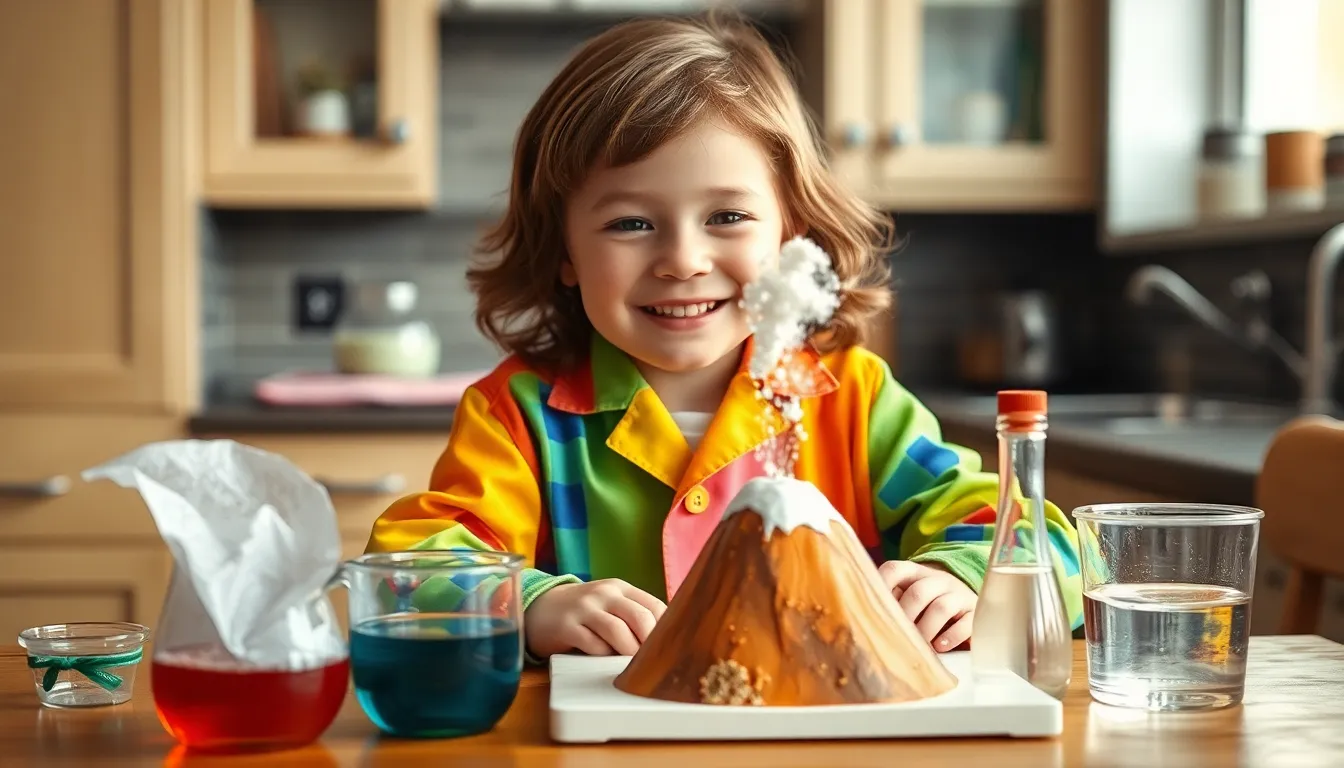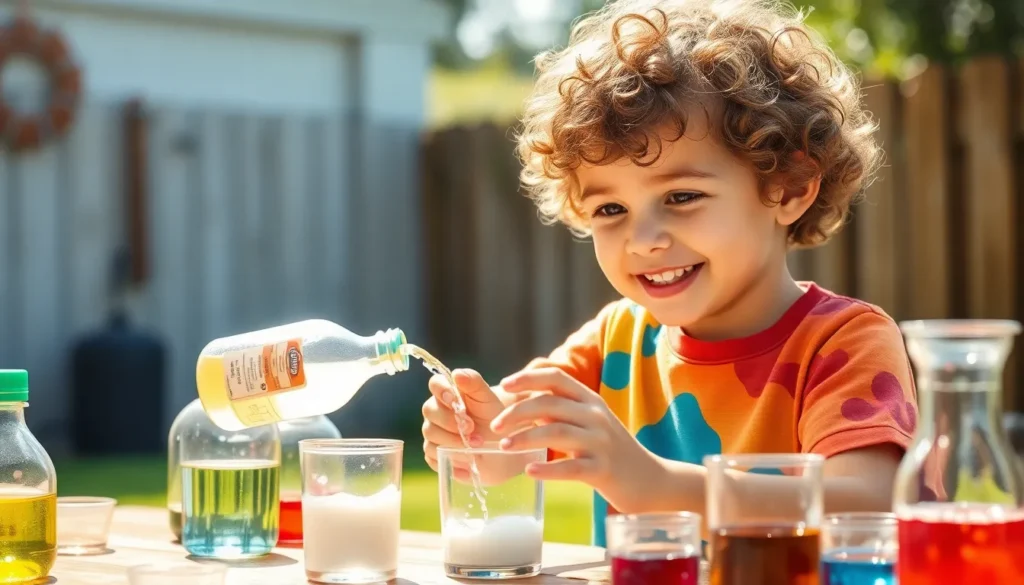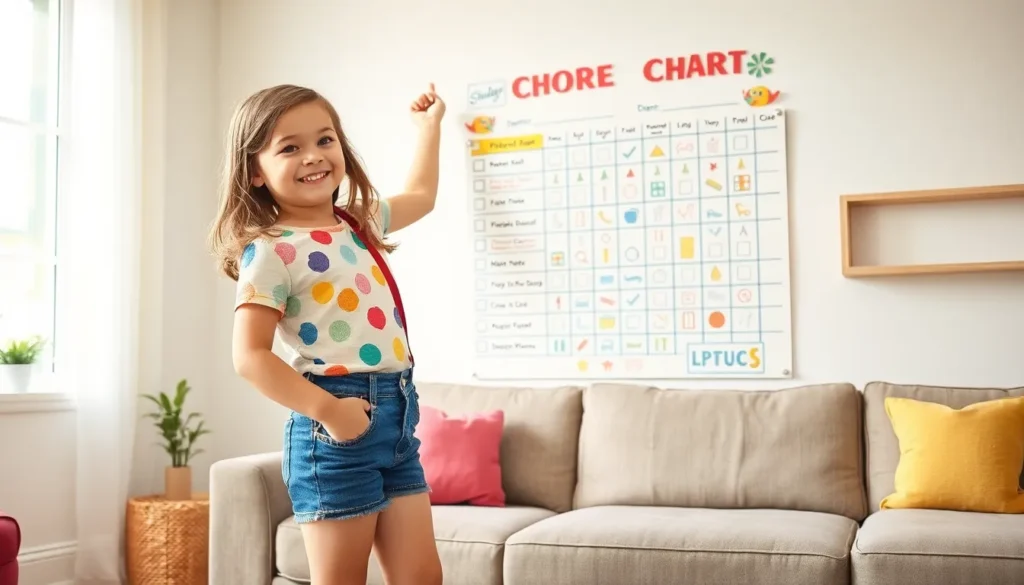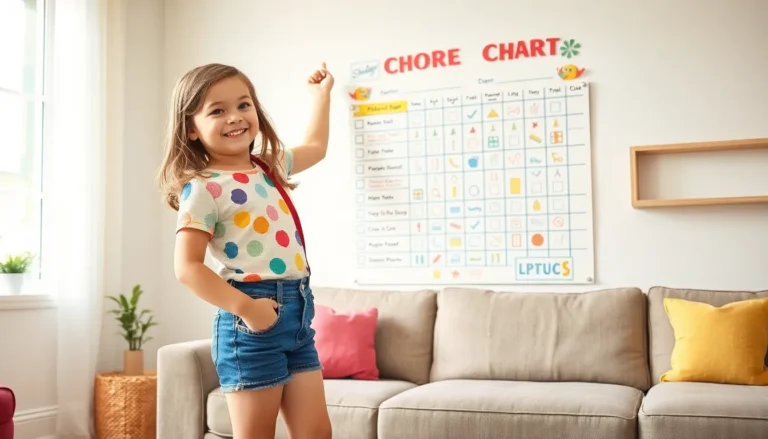Table of Contents
ToggleScience doesn’t have to be a daunting subject reserved for lab coats and complex equations. In fact, it can be a playground of discovery right in your kitchen or backyard. Simple science experiments offer a fun and engaging way to explore the wonders of the universe without needing a PhD or a mad scientist’s lab. Whether you’re a curious kid or an adult looking to impress your friends, these experiments are just the ticket to unleash your inner Einstein.
Overview Of Simple Science Experiments
Simple science experiments offer engaging ways to learn fundamental concepts in a hands-on manner. Many experiments utilize common household items, making them accessible to anyone. Common experiments include the classic volcano which combines baking soda and vinegar. This experiment demonstrates chemical reactions and produces visual excitement.
Another popular option involves creating a homemade compass using a needle, a magnet, and water. This experiment showcases Earth’s magnetic field in action. Observing how the needle orients itself can spark curiosity.
Exploratory experiments also include making kaleidoscopes with mirrors and colored paper. This process teaches symmetry and light reflection engagingly. Participants can modify their designs, enhancing creativity alongside scientific understanding.
Developing simple circuits with batteries and bulbs provides insight into electricity. Connecting wires to batteries and bulbs illustrates principles of conductivity and energy flow. Results encourage problem-solving and critical thinking.
Additionally, growing crystals from sugar or salt solutions illustrates the process of crystallization. Watching these structures form intrigues both adults and children alike. It allows exploration of physical changes and solubility.
These experiments foster a greater appreciation for science in daily life. Engaging in these activities can promote teamwork between family members or friends. Encouraging curiosity transforms learning into a delightful discovery process.
Benefits Of Simple Science Experiments

Simple science experiments offer numerous advantages that enhance learning experiences. Engaging in these activities allows individuals to discover scientific concepts firsthand.
Enhancing Critical Thinking Skills
Critical thinking skills improve significantly through hands-on experimentation. Participants analyze results and draw conclusions based on observations. When attempting to solve problems, they develop hypotheses and consider various outcomes. For example, a child conducting the volcano experiment evaluates reactions between baking soda and vinegar. This process encourages them to think logically and apply reasoning to understand how chemical reactions work.
Students gain confidence navigating scientific challenges, and they learn to ask questions and seek answers. Overall, simple science experiments effectively cultivate a critical thinking mindset in learners.
Fostering Creativity And Curiosity
Creativity and curiosity thrive during simple science experiments. Individuals explore new ideas and concepts by experimenting with different materials. A homemade compass sparks interest in Earth’s magnetic fields, leading to deeper investigations.
Participants design unique projects, allowing them to express their thoughts and imaginations. Engaging in these experiments instills a sense of wonder about the world. This attraction to exploration motivates learners to ask more questions and seek further knowledge. Ultimately, simple science experiments encourage an inquisitive attitude that enriches personal discovery and creativity.
Types Of Simple Science Experiments
Simple science experiments fall into various categories, including classroom and home settings. Each category provides unique learning opportunities that utilize everyday materials.
Classroom Experiments
In educational settings, classroom experiments engage students with interactive demonstrations. Students can explore scientific concepts through hands-on activities, making learning more enjoyable. For instance, the classic egg drop challenge teaches principles of gravity and engineering through problem-solving. Another example, the paper airplane experiment, illustrates aerodynamics as students test different designs for distance and flight time. These experiments foster teamwork and communication skills while allowing students to collaborate on scientific inquiries. Incorporating simple materials like paper, rubber bands, and other readily available items enhances accessibility.
Home Experiments
At home, parents and kids can conduct a variety of experiments using common household items. Baking soda and vinegar create an exciting volcano effect that teaches chemical reactions. Another fun activity includes growing crystals using sugar or salt solutions, showcasing the process of crystallization. Additionally, creating homemade magnets from iron filings and exploring magnetic fields can spark curiosity about Earth’s properties. Activities like these not only make science engaging but also promote family bonding through collaborative learning experiences. Simple home experiments cultivate an excitement for exploration and discovery in everyday life.
Tips For Conducting Simple Science Experiments
Conducting simple science experiments requires careful preparation. He or she must prioritize safety and gather the necessary materials before starting.
Safety Precautions
Safety remains paramount during any experiment. Always wear protective gear, such as goggles and gloves, to prevent accidents. Ensure a well-ventilated area to avoid inhaling harmful fumes. Supervision is crucial, especially for children. Keep a first aid kit handy for minor injuries. Additionally, read instructions thoroughly and follow them precisely. Having a clear understanding of the materials and procedures minimizes risks.
Materials Needed
Gathering materials ahead of time simplifies the experiment process. Most experiments require common household items, making them accessible. For example, baking soda, vinegar, and food coloring support various reactions. Paper, scissors, and plastic cups often facilitate simple projects. Many experiments also call for measuring spoons and containers for precise development. Ultimately, ensuring availability of these items enhances the overall experience.
Embracing simple science experiments opens doors to a world of discovery and creativity. By engaging in these hands-on activities, individuals can ignite their curiosity and develop a deeper understanding of scientific principles. The accessibility of these experiments encourages participation from all ages, making science a shared adventure.
Whether it’s creating a volcano or growing crystals, these activities foster teamwork and critical thinking skills. They transform learning into a fun and memorable experience, inspiring a lifelong love for science. With a little preparation and imagination, anyone can become a scientist in their own home, exploring the wonders of the universe one experiment at a time.







